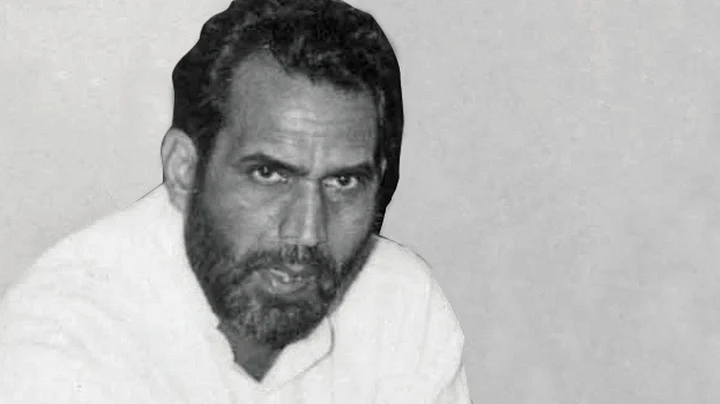January 2016 marks a milestone in India’s economic and political history. Twenty-five years ago, India made a shift from make-believe economics and woolly headed cold war romanticism to take the first steps to embrace the idea of economic freedom and geopolitical pragmatism.
The author of this strategic shift was former PM Chandra Shekhar – forever the Young Turk and die-hard socialist, an unlikely hero from the political marquee who emerged out of the many accidents that define India.
At 3 pm on January 18, 1991, the IMF met to consider a request for assistance. The applicant: Government of India. The India representative: Gopi K Arora.
The agenda read: India – Stand-by arrangement and purchase transaction–compensatory and contingency financing facility.
By the evening, at around 3 am in India, the IMF cleared the first tranches of a bailout. Embedded in the bailout was a promissory note that led to the dismantling of the licence raj and liberalisation of the economy.
The records—the January 18 IMF minutes, the December 5, 1991 IBRD loan agreement, and the July 7, 1995, Loan Completion document—show India’s transition from extractive economics to a free market economy was dictated by the template of the bailout.
India had presented as proof of intent the Industrial Policy authored by A N Verma and Rakesh Mohan in June 1990. It had also consented to 26 specific steps. It is this blue-print—authored in January 1991—that P V Narasimha Rao courageously implemented.
The crisis in the economy was scarcely a secret. V P Singh, who shortly after being sworn in as Prime Minister in December 1989, announced to the world that the “coffers were empty”.
India was in dire straits when Chandra Shekhar took over in November 1990. It could barely fund a week’s imports, NRIs were pulling out dollars, inflation was spiralling, and GDP growth was just 1 per cent.
India’s crisis managers—Sinha, Dr C Rangarajan, Gopi Arora, and Deepak Nayyar—were struggling to raise resources. Practitioners of voodoo economics advised Chandra Shekhar to default.
He knew the value of honouring the word. In a political economy where no government ever admits to a crisis, Chandra Shekhar declared he would go to the IMF.
Securing the bailout was not easy. The vote structure in IMF demanded support of the US, which was hard to come by. Chandra Shekhar deployed the ever-resourceful Subramanian Swamy, then minister for Law, Justice and Commerce, to work the wires of his contacts.
The US was then preparing for the Gulf War and the State Department wanted India to allow refuelling of their war planes in India. Swamy leveraged this need and ensured that the US supported India’s pitch for the bailout at the IMF.
India allowed refuelling and also broke away from the shackles of precedence —declaring that Iraq should vacate Kuwait and condemned the attacks on Israel.
Mind you, Chandra Shekhar’s 52 MPs depended on the Congress’ support and yet defied the party’s stated position on economics and geopolitics.
The tragedy is that in all the literature that followed the opening up of the economy, Chandra Shekhar has not got his due for his sagacity and courage.
Indeed, later-day regimes have presented crisis-led change as strategic advance and necessity as a virtue. It is true that B R Shenoy in the Sixties, T N Srinivasan and Jagdish Bhagwati in the Seventies and Vijay Kelkar, Montek Singh Ahluwalia and Rajiv Kumar in the Eighties did advocate dismantling of state controls.
But it is also true that change required a crisis and, more important, sagacious leadership.
In January 2016, it is instructive to recognise that nearly half of India’s current population was not born in 1991.
They scarcely know of an India that was stalled by sarkari queues, that was on the verge of bankruptcy and default, mired in a crisis of unprecedented magnitude.
If history is not to be repeated, it must be remembered. They say only the vanquished remember history. Truth is, victory depends on learning the lessons taught by history.
It is true that the 1991 reforms did deliver growth. But the structural change that should have followed was waylaid by politics. India continues to languish in manufacturing—both in terms of the proportion in gross domestic output and in numbers employed in industry.
Recently, India improved its ranking in ease of doing business from 142 to 130. But there is no escaping the reign of permissionism. Licence raj was dismantled, but permission raj persists.
It is convenient to say government has no business to be in business while campaigning, but inconvenient to implement the idea when in power. Should government persist with running hotels or airlines? Take banks—the total market capitalisation of PSU banks is less than that of two private sector banks.
Prima facie, the evidence on the ground shows that change depends on the force of the crisis. Worse, status quo makes a comeback within months of the crisis abating.
Despite claims of fame, successive governments have not shifted the needle towards efficiency, towards outcome-oriented public investment, towards a freer economy. Regime after regime have paid lip service to reforms and flattered to deceive.
Instead of right-sizing government, regimes have expanded the scope of the sarkar. Steel was decontrolled as part of the 1991 bailout plan, but we still have a steel ministry. Regulators should have replaced ministries, but in India both coexist in confusion.
As India wonders about the spectre of the global economic crisis—and the government hunts for solutions—it may be a good time to revisit history to learn if there are answers in unstated questions.
(This article first appeared in The New Indian Express. Shankkar Aiyar is the author of Accidental India: A History of the Nation’s Passage through Crisis and Change.)
